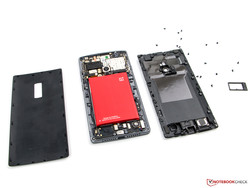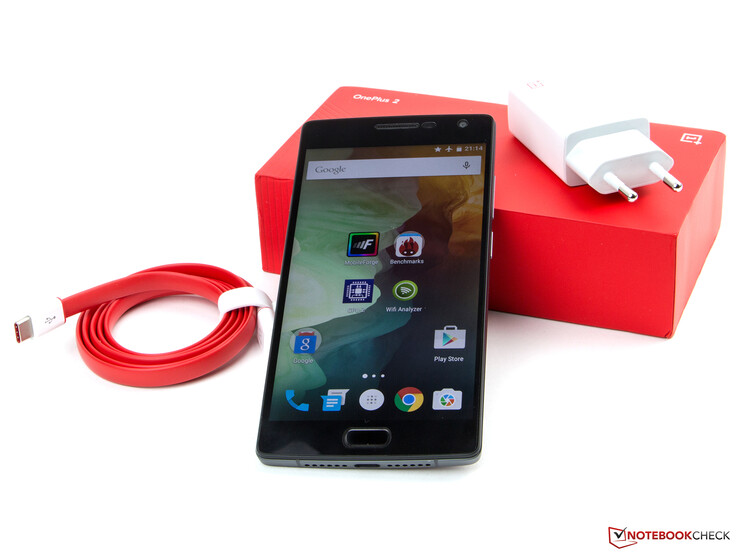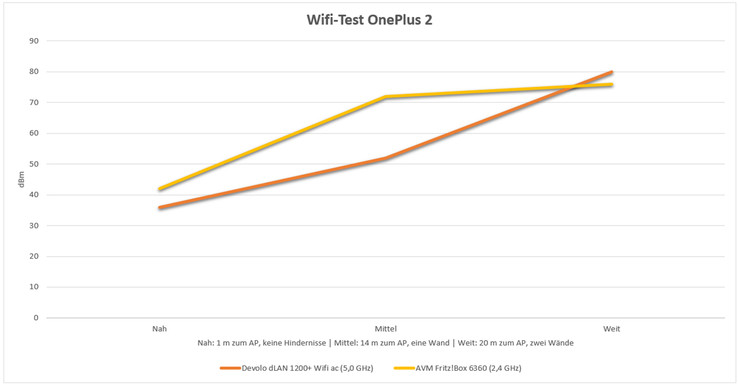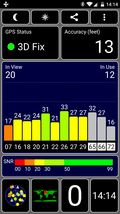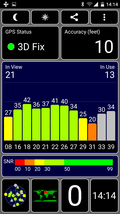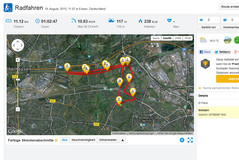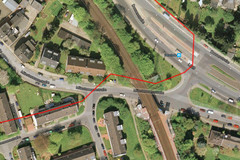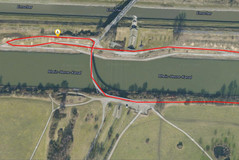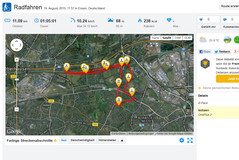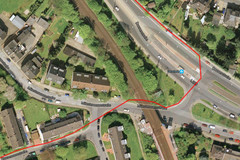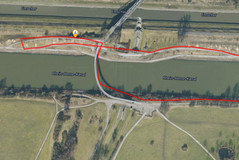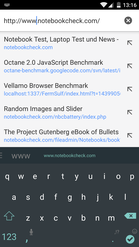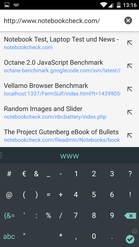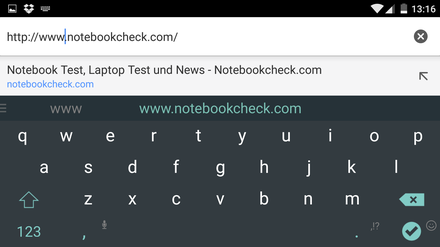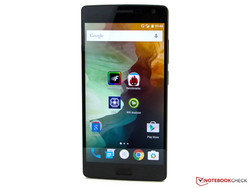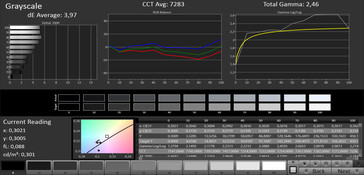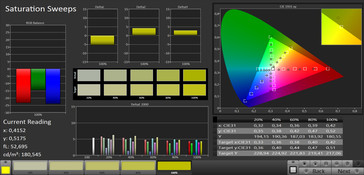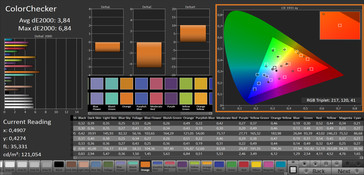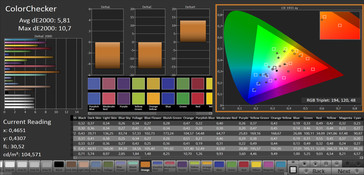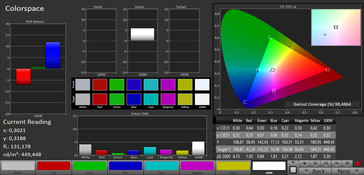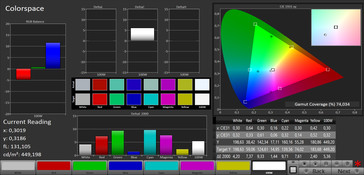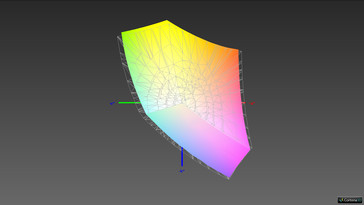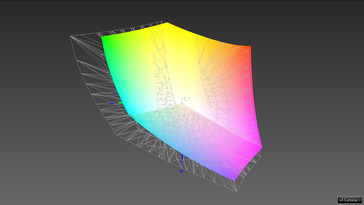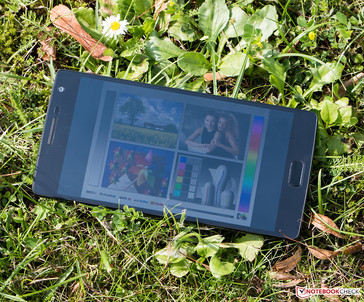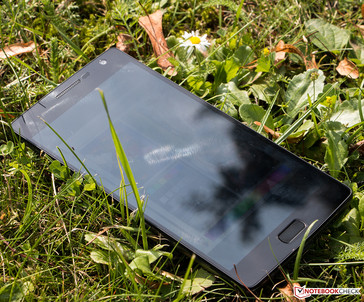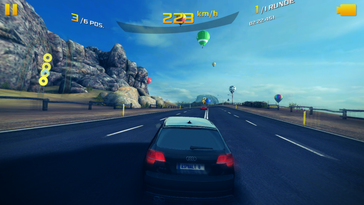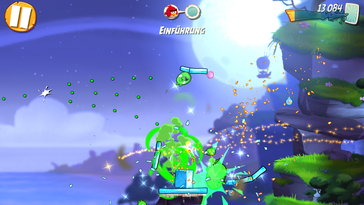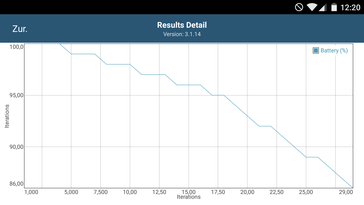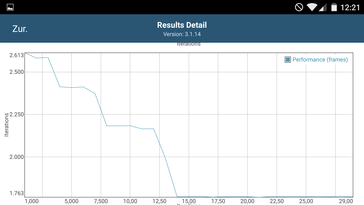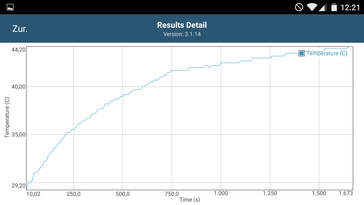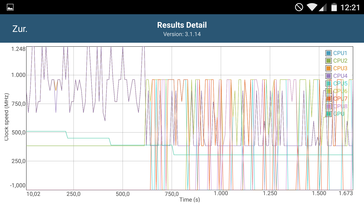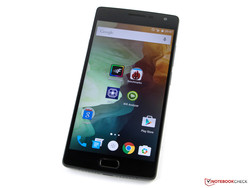OnePlus 2 Smartphone Review
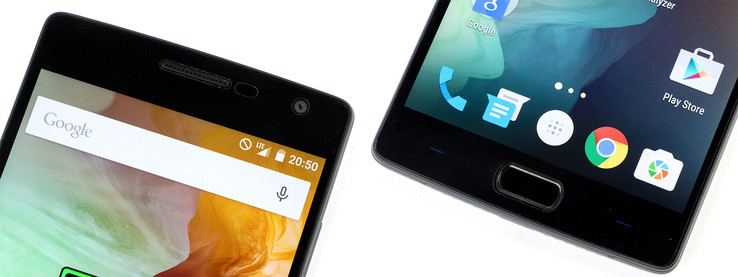
For the original German review, see here.
The small company from Shenzhen once again wants to beat the big rivals and launches a new device with very good specifications. You get the Snapdragon 810, which is familiar because of the heat issues, but the company has different approaches in respect of the thermal management. Europeans will be happy about the support for LTE connections in the 800 MHz band, but the devil is once again in the details. Both the display and the camera seem to be identical to the predecessor, but there were actually some changes under the hood. OnePlus unfortunately also changed the price: While the 64 GB version of the predecessor was available for just 299 Euros (~$333, + shipping), you will now have to pay 100 Euros (~$111) more, although this is still a very reasonable price. The less expensive model with 16 GB is supposed to launch later for 339 Euros (~$378). You also have to calculate an additional 20 Euros (~$22) for the shipping in both cases. The devices are usually shipped from within the EU, so there are no additional taxes or customs duties.
There are numerous competitors, but they are usually much more expensive. Among others, the list includes the Samsung Galaxy S6 Edge, HTC One M9, Huawei P8, Apple iPhone 6 Plus, Sony Xperia Z3+, LG G4 as well as the Honor 7. The latter is actually in the same price range and the Huawei flagship is just a bit more expensive.
Case
Width and length of the OnePlus 2 are a bit smaller compared to the predecessor, but the new device is a bit thicker in return at 9.85 millimeters (~0.39 in). The area around the camera is the thickest at 10.55 millimeters (~0.42 in) due to the curved back panel. The weight of 178 grams (~6.3 oz) is also comparatively high. Even the iPhone 6 Plus (7.1 mm, 172 g/~0.28 in, ~6.1 oz) is slightly lower. The lightest device within the comparison is the Galaxy S6 Edge (132 g, 7.0 mm/~4.7 oz, ~0.275 in, without the camera), while the Huawei P8 (147 g/~5.2 oz) has the thinnest silhouette at 6.4 millimeters (~0.25 in). The weight of the OnePlus 2 was not really an issue during the review period, it actually leaves a quality impression.
This level of sophistication is increased by the aluminum. The display was unfortunately not integrated into the aluminum frame, so there is an additional plastic frame on top of the aluminum. Contrary to the OnePlus One, the SIM-slot is not at the side anymore, but is hidden underneath the detachable rear cover. It is a dual-SIM LTE slot, which accepts two Nano-SIMs. The removal of the back cover is easy thanks to a small indentation. Still, the cover sits very firmly and it is fairly thin, so you are actually a bit worried that it could be damaged. Our review unit was not damaged though. The replaceable back cover is also available in other designs besides the Sandstone Black version, including Kevlar and several kinds of wood. The former feels like fine sandpaper and makes it easy to grip.
If you think that the detachable back cover also allows a battery change you will be disappointed. The battery is underneath an additional plastic cover, which is secured by 18 Philips screws. It is easy to lift the cover once you removed the screws. It is still tricky to remove the battery, but it should not be problem for users with electrical experience. The manufacturer does not use a lot of glue, so the maintainability of the OnePlus 2 is actually pretty good, even though the activities should be performed by experienced personnel. Our colleagues from iFixit rated the smartphone with 7 out of 10 points.
The build quality is on a good level. It is not possible to twist the device and there is hardly any creaking when you try it. The gaps are good as well; you can only see that the display is not completely flush with the frame when you have a closer look.
Connectivity
The OnePlus 2 still has room for improvement in respect of the connectivity. You do get the latest USB type C port, but it is just a USB 2.0 port. It is supposed to support OTG, but the smartphone recognized neither USB sticks nor external input devices. MHL and Slim-Port are not available, either.
The situation is not much better for wireless picture transfers. Wi-Fi Direct (Miracast) is supported, but the quality was poor. Even contents that were recorded with the smartphone were not displayed without problems and we could often see artifacts. Streamed videos from the Internet often froze (picture and sound) for longer periods and were often not in sync. We tested it with an Amazon Fire TV Stick. Both the LG G4 and the Honor 6+ did not have problems in the reviews.
An NFC chip is completely missing, which should not be the case for a high-end device. Android Pay will be available soon, and connections between devices as well as data transfers between smartphones are much easier with NFC. There is no infrared transmitter, either, so it is not possible to control devices like the TV, climate control or the AV receiver at home. Many rivals are equipped with this component by default.
Last but not least: You do not get a microSD slot. This is not such a big issue with 64 GB flash storage, but this cannot be said about the smaller 16 GB model.
Software
OnePlus does not use CyanogenMod for its new smartphone anymore, but developed its own distribution Oxygen OS 2.0 that is based on Android 5.1.1. The design hardly differs from stock Android, which can be changed with a dark theme and Oxygen OS also implements some small extensions.
It is, for instance, no problem to change the rights of individual apps after the installation, the notification LED can be configured and you get a so-called Audio Tuner app, where the sound can be adjusted for different output devices via an equalizer.
Users can also configure the sensor buttons more comprehensively this time or even deactivate them completely in favor of the on-screen versions. The quick start menu can be adjusted based on your preferences as well.
There was an update to Oxygen 2.0.1 a couple of days after the release of the OnePlus 2, which included bug fixes, implemented some small improvements and closed the Stagefright leak.
Communication & GPS
Mobile Internet connections on the OnePlus 2 are possible via HSPA+ or fast LTE Cat. 6 (up to 300 Mbps). While the OnePlus One still had the problem that it did not support the 800 MHz LTE band (20), the manufacturer made it better this time. Still, you cannot really call it a globetrotter since there is no global version of the smartphone, but the bands are adjusted to the individual regions. While the European version lacks the bands 700 and 1,700 MHz that are important for North America, the U.S. version lacks the 800 and 1,800 MHz bands. This means it should still be possible to use fast Internet connections abroad, but there can be limitations depending on your service provider. Still, the review unit covers quite a lot of frequencies in comparison.
The Wi-Fi module of the OnePlus 2 supports the IEEE-802.11 standards a/b/g/n/ac in 2.4 as well as 5.0 GHz networks. The dampening is pretty good as well and does not show big fluctuations. The 5.0 GHz network in particular was very stable during our review and even long distances to the Access Point (AP) did not affect the playback of an HD video stream, despite a high dampening.
Bluetooth 4.1 is also available and works flawlessly. Audio streaming does not suffer from delays as long as the distance to the speaker is not too big. The range is just average at around 10 meters (~33 feet), and there can be occasional stutters at this distance.
The OnePlus 2 uses GPS and GLONASS satellites to determine the position, but BeiDou is not supported. The satellite fix was fast, even indoors, and it was a bit more precise outdoors. No criticism so far, which is why we compare the performance of the smartphone with the outdoor navigation device Garmin GPSMAP64s.
The smartphone does a reasonable job on the bicycle ride, and it is even a bit more precise than the navigation device in the narrow street section. The situation changes when we cross the river, which means that the overall performance of the two devices is very close. The OnePlus 2 only differs from the Garmin reference product by 0.3%.
Telephone & Voice Quality
The phone app of the OnePlus 2 is virtually identical to Android 5.1 and therefore agreeably simple. The voice quality is very good when you hold the device to your ear, and the voices are very clear on both sides of the call. This changes when you use the internal speaker, where both sides will have to live with occasional dropouts and the voice will be distorted.
Cameras
At the front of the OnePlus 2 is a 5 MP sensor that can use a Beauty mode, which is basically just a simple soft focus. The pictures of the front camera are well illuminated, but both the sharpness and the details leave room for improvements when full size, even though this is hardly noticeable on the smartphone display. It is therefore well suited for social networks.
Similar to its predecessor, you once again get a 13 MP camera at the back (4160x3120 pixels, 4:3) with six lenses. The manufacturer specifies an aperture of f/2.0, which is also similar to the OnePlus One. A new feature is the laser autofocus that is familiar from the LG G3 or LG G4. It is supposed to enable a faster focusing and it actually worked very well. An optical image stabilizer completes the list of features.
The quality of the pictures is good, but it cannot compete with current top smartphones like the Galaxy S6 (Edge) or the LG G4. The dynamic range of the review unit could be bigger and the pictures also show a slight blue cast. The HDR mode does at least improve the dynamics, but it has to be activated manually every time. Low-light pictures also lack sharpness, even though the brightness is sufficiently good.
Panoramas are also supported by the OnePlus 2. The handling is pretty easy, but you have to be careful to avoid any shaking, otherwise there will be unsightly transitions in the final picture. You can see that at the bridge railing in our sample picture.
The settings within the camera app are generally very minimalistic. Comprehensive options, filters or different shooting modes are not available, which is also the case for a manual mode.
Videos on the OnePlus 2 can either be recorded in Ultra HD or Full HD, but the frame rate is limited to 30 fps in both modes. The predecessor was better in this respect and did at least support Full HD at 60 fps. Ultra HD videos are also limited to 10 minutes. There is also a slow motion (120 fps, 720p) and a time-lapse mode. We once again miss more settings.
Another annoying issue with the videos is that there seems to be a problem with the laser autofocus. It searches for the best focusing point all the time and therefore creates visible push effects. The result is that videos are not very enjoyable. OnePlus definitely has to improve this with an update. The quality of the videos is otherwise pretty good.
Accessories
The provided accessories are limited to a modular power adaptor with a nominal output of 10 watts (2 A, 5 V) as well as the corresponding USB cable. Otherwise, you only get a quick-start guide and a small sheet of paper with warranty information.
Optional accessories are available on the website of the manufacturer. You can buy additional StyleSwap covers (27 Euros/$30 each) as well as cases, cables and headphones.
Warranty
OnePlus only grants a global warranty of 12 months for the Two, and 24 months in Europe. This period cannot be extended and covers the smartphone and the data cable. The power adaptor on the other hand only has a warranty of 15 days.
Input Devices & Handling
The capacitive touchscreen of the OnePlus 2 is protected by Corning Gorilla Glass 4 and can recognize up to ten inputs simultaneously. The gliding capabilities are very good and inputs in the peripheral areas are reliable as well. Even two fingers that are close to each other are no problem. You will only have to repeat gestures sometimes when the display is deactivated.
The gestures can be activated in the settings and include the familiar double-tap-to-wake gesture. It is also possible to activate the camera or the flashlight. Even the music player can be controlled this way.
The physical buttons have a firm pressure point and left a good impression. The Alert Slider on the opposite side is actually quite handy and enables the control of the notification behavior of the OnePlus 2 in three stages without having to activate the smartphone first.
We experienced no problems when we used the sensor buttons and it is also possible to illuminate them. You can even deactivate them and use on-screen buttons. The two outer buttons are only displayed as lines because you can reassign their function and configure them quite comprehensively. You can, for example, launch the camera directly or assign a double-tap for the camera.
The big home button in the center is also a sensor button and not only supports common functions, but also accommodates the fingerprint reader. It works really well and the detection rate is decent. Up to five fingerprints can be stored and managed.
Display
The first impression is that the display of the OnePlus 2 did not really change compared to the predecessor, but this is not correct. You still get a 5.5-inch screen with a native resolution of 1920x1080 pixels (16:9, 401 PPI), but the luminance was improved.
The brightness distribution is now more even and the result of 90% is very good. The luminance was slightly increased as well. Thanks to the significantly better black value, the review unit not only appears really dark, but also manages an excellent contrast ratio of 1,503:1. This value is only beaten by rivals with an LC display like the Huawei P8 and the Honor 7.
| |||||||||||||||||||||||||
Brightness Distribution: 90 %
Center on Battery: 451 cd/m²
Contrast: 1503:1 (Black: 0.3 cd/m²)
ΔE ColorChecker Calman: 3.84 | ∀{0.5-29.43 Ø4.77}
ΔE Greyscale Calman: 3.97 | ∀{0.09-98 Ø5}
90.14% sRGB (Argyll 1.6.3 3D)
58.07% AdobeRGB 1998 (Argyll 1.6.3 3D)
Gamma: 2.46
CCT: 7283 K
| OnePlus 2 Adreno 430, 810 MSM8994, 64 GB eMMC Flash | OnePlus One Adreno 330, 801 MSM8974AC, 64 GB eMMC Flash | HTC One M9 Adreno 430, 810 MSM8994, 32 GB eMMC Flash | Samsung Galaxy S6 Edge Mali-T760 MP8, Exynos 7420, 32 GB UFS 2.0 Flash | Huawei P8 Mali-T628 MP4, Kirin 930, 16 GB eMMC Flash | LG G4 Adreno 418, 808 MSM8992, 32 GB eMMC Flash | Apple iPhone 6 Plus PowerVR GX6450, A8, 64 GB eMMC Flash | Honor 7 Mali-T628 MP4, Kirin 935, 64 GB eMMC Flash | |
|---|---|---|---|---|---|---|---|---|
| Screen | -41% | -22% | 15% | -1% | -14% | -17% | 1% | |
| Brightness middle (cd/m²) | 451 | 423 -6% | 474 5% | 343 -24% | 453 0% | 566 25% | 519 15% | 442 -2% |
| Brightness (cd/m²) | 446 | 408 -9% | 458 3% | 338 -24% | 439 -2% | 536 20% | 496 11% | 440 -1% |
| Brightness Distribution (%) | 90 | 83 -8% | 85 -6% | 94 4% | 91 1% | 90 0% | 90 0% | 92 2% |
| Black Level * (cd/m²) | 0.3 | 0.54 -80% | 0.4 -33% | 0.28 7% | 0.47 -57% | 0.62 -107% | 0.23 23% | |
| Contrast (:1) | 1503 | 783 -48% | 1185 -21% | 1618 8% | 1204 -20% | 837 -44% | 1922 28% | |
| Colorchecker dE 2000 * | 3.84 | 5.56 -45% | 6.32 -65% | 2.2 43% | 4.7 -22% | 6.17 -61% | 3.67 4% | 4.52 -18% |
| Greyscale dE 2000 * | 3.97 | 7.55 -90% | 6.36 -60% | 2.37 40% | 5.03 -27% | 6.26 -58% | 3.78 5% | 5.47 -38% |
| Gamma | 2.46 89% | 2.33 94% | 2.43 91% | 2.41 91% | 2.27 97% | 2.48 89% | 2.42 91% | 2.27 97% |
| CCT | 7283 89% | 7624 85% | 8218 79% | 6425 101% | 7439 87% | 8171 80% | 7327 89% | 7874 83% |
| Color Space (Percent of AdobeRGB 1998) (%) | 58.07 | 58.81 1% | 87.77 51% | 72.04 24% | 65.48 13% | |||
| Color Space (Percent of sRGB) (%) | 90.14 | 98.63 9% | 99.7 11% |
* ... smaller is better
You can immediately notice the high contrast of the OnePlus 2 panel, which leaves a very good subjective impression. Colors look rich without being unnatural. We performed a detailed display analysis with the software CalMAN and a spectrophotometer, and the measurement results are convincing as well.
The deviation of the grayscale increases with brighter areas and we can also see a slight blue cast, but this is not a problem in practice. This problem is less pronounced for the colors, even though the DeltaE deviations are actually slightly higher. Orange colors in particular are a bit too pale, because they are slightly shifted towards yellow. We can even see a slight undersaturation, but it is still within an acceptable range. Overall, a good performance of the OnePlus 2 with a comparatively natural color reproduction that is only surpassed by the Galaxy S6 (Edge) and the iPhone 6 Plus. The color space coverage can still be improved; only 90% of the sRGB and 58% of the AdobeRGB color space are no highlight in the high-end segment.
This means there are no big problems when you use the OnePlus 2 outdoors. A good panel brightness as well as the excellent contrast ratio are sufficient for the majority of lighting conditions. Only direct sunlight can be too much for the smartphone. The glossy display can also create annoying reflections.
The viewing angles leave a good impression as well. The picture content is always visible thanks to the LTPS technology, even with very flat angles and you can just see a slight brightness decrease. Colors do not invert and we cannot see a ghosting effect, either. The latter is a result of the used In-Cell technology.
Performance
We already mentioned that the OnePlus 2 uses the Snapdragon 810 MSM8994, which is the fastest SoC from Qualcomm, and it is supported by 4 GB memory (only 3 GB in the cheapest version) as well as the Adreno 430. Similar configurations are used by the HTC One M9, LG Flex 2 and the Sony Xperia Z3+, the only difference is that the rivals only have 3 GB RAM and their Snapdragon is slightly faster at 2.0 GHz. OnePlus uses an optimized firmware for the SoC, which does limit the clock to 1.8 GHz, but is supposed to handle the heat development better in combination with a more efficient utilization of the individual cores.
It works very well in the benchmarks. Despite the lower clock, the OnePlus 2 offers the best results in respect of CPU and GPU performance. It is only beaten by the Galaxy S6 (Edge), but not in all tests. Especially the demanding graphics benchmarks determine good results for the review unit. It is clearly at the top in Basemark ES 3.1 and it can also convince in the new 3DMark tests. It even manages a better Physics score than the Galaxy in the Open GL ES 3.1 test. Only GFXBench 3.0 and 3.1 could not be finished due to "Network Errors".
| AnTuTu v5 - Total Score (sort by value) | |
| OnePlus 2 | |
| OnePlus One | |
| HTC One M9 | |
| LG G4 | |
| Samsung Galaxy S6 Edge | |
| LG G Flex 2 | |
| Sony Xperia Z3+ | |
| Apple iPhone 6 Plus | |
| Honor 7 | |
| Huawei P8 | |
| Geekbench 3 | |
| 64 Bit Single-Core Score (sort by value) | |
| OnePlus 2 | |
| HTC One M9 | |
| LG G4 | |
| Samsung Galaxy S6 Edge | |
| Sony Xperia Z3+ | |
| Honor 7 | |
| Huawei P8 | |
| 64 Bit Multi-Core Score (sort by value) | |
| OnePlus 2 | |
| HTC One M9 | |
| LG G4 | |
| Samsung Galaxy S6 Edge | |
| Sony Xperia Z3+ | |
| Honor 7 | |
| Huawei P8 | |
| PCMark for Android - Work performance score (sort by value) | |
| OnePlus 2 | |
| OnePlus One | |
| HTC One M9 | |
| LG G4 | |
| Samsung Galaxy S6 Edge | |
| LG G Flex 2 | |
| Sony Xperia Z3+ | |
| Honor 7 | |
| Huawei P8 | |
| 3DMark | |
| 2560x1440 Sling Shot OpenGL ES 3.0 (sort by value) | |
| OnePlus 2 | |
| HTC One M9 | |
| LG G4 | |
| Samsung Galaxy S6 Edge | |
| Sony Xperia Z3+ | |
| Honor 7 | |
| 2560x1440 Sling Shot OpenGL ES 3.0 Graphics (sort by value) | |
| OnePlus 2 | |
| HTC One M9 | |
| LG G4 | |
| Samsung Galaxy S6 Edge | |
| Sony Xperia Z3+ | |
| Honor 7 | |
| 2560x1440 Sling Shot OpenGL ES 3.0 Physics (sort by value) | |
| OnePlus 2 | |
| HTC One M9 | |
| LG G4 | |
| Samsung Galaxy S6 Edge | |
| Sony Xperia Z3+ | |
| Honor 7 | |
| 2560x1440 Sling Shot Extreme (ES 3.1) (sort by value) | |
| OnePlus 2 | |
| HTC One M9 | |
| LG G4 | |
| Samsung Galaxy S6 Edge | |
| Sony Xperia Z3+ | |
| Honor 7 | |
| 2560x1440 Sling Shot Extreme (ES 3.1) Graphics (sort by value) | |
| OnePlus 2 | |
| HTC One M9 | |
| LG G4 | |
| Samsung Galaxy S6 Edge | |
| Sony Xperia Z3+ | |
| Honor 7 | |
| 2560x1440 Sling Shot Extreme (ES 3.1) Physics (sort by value) | |
| OnePlus 2 | |
| HTC One M9 | |
| LG G4 | |
| Samsung Galaxy S6 Edge | |
| Sony Xperia Z3+ | |
| Honor 7 | |
| GFXBench (DX / GLBenchmark) 2.7 | |
| T-Rex Onscreen (sort by value) | |
| OnePlus 2 | |
| OnePlus One | |
| HTC One M9 | |
| LG G4 | |
| Samsung Galaxy S6 Edge | |
| LG G Flex 2 | |
| Sony Xperia Z3+ | |
| Apple iPhone 6 Plus | |
| Honor 7 | |
| Huawei P8 | |
| 1920x1080 T-Rex Offscreen (sort by value) | |
| OnePlus 2 | |
| OnePlus One | |
| HTC One M9 | |
| LG G4 | |
| Samsung Galaxy S6 Edge | |
| LG G Flex 2 | |
| Sony Xperia Z3+ | |
| Apple iPhone 6 Plus | |
| Honor 7 | |
| Huawei P8 | |
| Basemark ES 3.1 / Metal - offscreen Overall Score (sort by value) | |
| OnePlus 2 | |
| HTC One M9 | |
| LG G Flex 2 | |
| Sony Xperia Z3+ | |
| Lightmark - 1920x1080 1080p (sort by value) | |
| OnePlus 2 | |
| OnePlus One | |
| HTC One M9 | |
| LG G4 | |
| Samsung Galaxy S6 Edge | |
| LG G Flex 2 | |
| Sony Xperia Z3+ | |
The OnePlus 2 also leaves a great impression in the browser benchmarks and it is usually pretty near the top in the rankings. Only the Galaxy S6 (Edge) or the iPhone 6 Plus are usually a bit faster. Still, you can only guess the difference in practice, and web browsing is subjectively very fast.
| Octane V2 - Total Score (sort by value) | |
| OnePlus 2 | |
| HTC One M9 | |
| LG G4 | |
| Samsung Galaxy S6 Edge | |
| LG G Flex 2 | |
| Sony Xperia Z3+ | |
| Apple iPhone 6 Plus | |
| Honor 7 | |
| Huawei P8 | |
| Sunspider - 1.0 Total Score (sort by value) | |
| OnePlus 2 | |
| OnePlus One | |
| HTC One M9 | |
| LG G4 | |
| Samsung Galaxy S6 Edge | |
| LG G Flex 2 | |
| Sony Xperia Z3+ | |
| Apple iPhone 6 Plus | |
| Honor 7 | |
| Huawei P8 | |
| Mozilla Kraken 1.1 - Total (sort by value) | |
| OnePlus 2 | |
| OnePlus One | |
| HTC One M9 | |
| LG G4 | |
| Samsung Galaxy S6 Edge | |
| LG G Flex 2 | |
| Sony Xperia Z3+ | |
| Apple iPhone 6 Plus | |
| Honor 7 | |
| Huawei P8 | |
| JetStream 1.1 - Total Score (sort by value) | |
| OnePlus 2 | |
| HTC One M9 | |
| LG G4 | |
| Samsung Galaxy S6 Edge | |
| Sony Xperia Z3+ | |
| Honor 7 | |
| WebXPRT 2015 - Overall (sort by value) | |
| OnePlus 2 | |
| HTC One M9 | |
| LG G4 | |
| Sony Xperia Z3+ | |
| Honor 7 | |
| Huawei P8 | |
| Vellamo 3.x - Browser (sort by value) | |
| OnePlus 2 | |
| OnePlus One | |
| HTC One M9 | |
| LG G4 | |
| Samsung Galaxy S6 Edge | |
| LG G Flex 2 | |
| Sony Xperia Z3+ | |
| Huawei P8 | |
| Browsermark - 2.1 (sort by value) | |
| OnePlus 2 | |
| OnePlus One | |
| HTC One M9 | |
| LG G4 | |
| Samsung Galaxy S6 Edge | |
| LG G Flex 2 | |
| Sony Xperia Z3+ | |
| Huawei P8 | |
* ... smaller is better
Our review unit comes with a generous storage capacity of 64 GB. You can use exactly 53 GB from the eMMC-5.0 flash storage ex-works. The performance of the storage is actually not bad, but there are other standards among the flagship segment, so the results of the OnePlus 2 are average. One strength is the writing of files. All in all a good performance, but there are no highlights.
There is unfortunately no way to expand the storage. This is not a big deal when you use the 64 GB model, but there might be problems when you have the 16 GB version, especially if you like to take a lot of pictures.
| BaseMark OS II - Memory (sort by value) | |
| OnePlus 2 | |
| OnePlus One | |
| HTC One M9 | |
| LG G4 | |
| Samsung Galaxy S6 Edge | |
| LG G Flex 2 | |
| Sony Xperia Z3+ | |
| Apple iPhone 6 Plus | |
| Honor 7 | |
| Huawei P8 | |
| PassMark PerformanceTest Mobile V1 | |
| Disk Tests (sort by value) | |
| OnePlus 2 | |
| HTC One M9 | |
| LG G4 | |
| Samsung Galaxy S6 Edge | |
| LG G Flex 2 | |
| Sony Xperia Z3+ | |
| Apple iPhone 6 Plus | |
| Huawei P8 | |
| Memory Tests (sort by value) | |
| OnePlus 2 | |
| HTC One M9 | |
| LG G4 | |
| Samsung Galaxy S6 Edge | |
| LG G Flex 2 | |
| Sony Xperia Z3+ | |
| Apple iPhone 6 Plus | |
| Huawei P8 | |
Games
Although the clock of the Qualcomm Adreno 430 was reduced to 630 MHz inside the OnePlus 2, it still offers a lot of performance and is one of the fastest GPUs right now. There were no limitations when we played Asphalt 8 on the highest settings, and the racing game was always smooth. However, the aluminum frame gets quite warm, and the speaker is often covered by the hand in landscape mode. Otherwise, the gaming experience is very good on the OnePlus 2 and there were no problems.
Emissions
Temperature
The surface temperatures of the OnePlus 2 are already pretty high while idling and we can measure up to 38.9 °C (102 °F) at the top. The temperatures reach up to 45.8 °C (114.4 °F) under load, which is high and only the Sony Xperia Z3 Plus (up to 46.9 °C/116.4 °F) gets even warmer among the comparison group. The coolest devices are the Huawei P8 (up to 35.7 °C/96.3 °F) and the One M9 (38.4 °C/101.1 °F). The temperatures at the aluminum frame were also unpleasant at some spots during gaming.
We checked the temperature development of the SoC with the GFXBench 3.1 battery test. It repeats the Open GL ES 2.0 test T-Rex thirty times and logs the smartphone data. We can clearly see that the optimization of the Snapdragon 810 cannot prevent performance limitations under sustained load, but the performance is longer on a higher level. Still, the frame rate drops by almost 50% after half of the test, so there is still noticeable throttling.
(-) The maximum temperature on the upper side is 45.8 °C / 114 F, compared to the average of 35.2 °C / 95 F, ranging from 21.9 to 247 °C for the class Smartphone.
(±) The bottom heats up to a maximum of 43.5 °C / 110 F, compared to the average of 34 °C / 93 F
(±) In idle usage, the average temperature for the upper side is 37.2 °C / 99 F, compared to the device average of 32.9 °C / 91 F.
Speakers
At the bottom of the OnePlus 2 are two speaker grilles. Similar to the Huawei P8 or the Honor 7, however, there is just one small speaker at the right side. The sound quality is decent for a smartphone: It is comparatively rich and high tones are very clear. At least if you do not crank up the volume. The OnePlus 2 will be really loud in this case, but you can also hear slight distortions.
The audio tuner works very well, and the sound is noticeably improved via external speakers or headphones in particular. The stereo jack also leaves a good impression and enables low-noise playback.
Energy Management
Power Consumption
The power consumption of the OnePlus 2 is good and does not cause any criticism. Only the slightly increased power consumption in standby is noticeable and the Galaxy S6 (Edge) is the only device in the comparison that is better in all tests.
The battery capacity was increased to 3,300 mAh and can be completely charged within 2 hours and 20 minutes with the provided power adaptor. Quick Charge is unfortunately not supported, just like the wireless charging of the device.
| OnePlus 2 Adreno 430, 810 MSM8994, 64 GB eMMC Flash | HTC One M9 Adreno 430, 810 MSM8994, 32 GB eMMC Flash | LG G4 Adreno 418, 808 MSM8992, 32 GB eMMC Flash | Sony Xperia Z3+ Adreno 430, 810 MSM8994, 32 GB eMMC Flash | Huawei P8 Mali-T628 MP4, Kirin 930, 16 GB eMMC Flash | Apple iPhone 6 Plus PowerVR GX6450, A8, 64 GB eMMC Flash | Samsung Galaxy S6 Edge Mali-T760 MP8, Exynos 7420, 32 GB UFS 2.0 Flash | |
|---|---|---|---|---|---|---|---|
| Power Consumption | -37% | -28% | -19% | -12% | -1% | 22% | |
| Idle Minimum * (Watt) | 0.6 | 1.1 -83% | 1.1 -83% | 0.6 -0% | 0.7 -17% | 0.5 17% | 0.5 17% |
| Idle Average * (Watt) | 1.7 | 2 -18% | 1.5 12% | 2.5 -47% | 2 -18% | 2.1 -24% | 0.9 47% |
| Idle Maximum * (Watt) | 1.8 | 2.4 -33% | 1.9 -6% | 2.7 -50% | 2.1 -17% | 2.5 -39% | 1.3 28% |
| Load Average * (Watt) | 5.7 | 7.2 -26% | 6.6 -16% | 5.5 4% | 4.9 14% | 3.5 39% | 3.8 33% |
| Load Maximum * (Watt) | 6 | 7.5 -25% | 8.8 -47% | 6.1 -2% | 7.4 -23% | 5.8 3% | 6.8 -13% |
* ... smaller is better
| Off / Standby | |
| Idle | |
| Load |
|
Key:
min: | |
Battery Runtime
The battery runtimes can unfortunately not keep up with the predecessor. They are pretty average within the comparison group, but they are still convincing. Especially the results in the reading test at the minimum luminance result in a great runtime of almost one day, but the load runtime is not bad, either.
The best way to compare different smartphones is testing at an adjusted panel brightness of 150 cd/m². It is on par with the One M9 and the Xperia Z3+ when you browse the web. The LG Flex 2 shows that it can be better and last 80% longer. A loop of the movie Big Buck Bunny determines a very good result for the OnePlus 2, but there are once again some rivals that last longer.
All things considered, you should get through the day with one battery charge.
| OnePlus 2 Adreno 430, 810 MSM8994, 64 GB eMMC Flash | HTC One M9 Adreno 430, 810 MSM8994, 32 GB eMMC Flash | OnePlus One Adreno 330, 801 MSM8974AC, 64 GB eMMC Flash | Sony Xperia Z3+ Adreno 430, 810 MSM8994, 32 GB eMMC Flash | LG G Flex 2 Adreno 430, 810 MSM8994, 16 GB eMMC Flash | Apple iPhone 6 Plus PowerVR GX6450, A8, 64 GB eMMC Flash | Huawei P8 Mali-T628 MP4, Kirin 930, 16 GB eMMC Flash | |
|---|---|---|---|---|---|---|---|
| Battery runtime | -17% | 53% | 12% | 15% | 2% | -6% | |
| Reader / Idle (h) | 23.2 | 13.4 -42% | 26.1 13% | 28.2 22% | 21.2 -9% | 23.9 3% | 13.8 -41% |
| H.264 (h) | 9.7 | 7 -28% | 14.9 54% | 8.8 -9% | 12.1 25% | 11.3 16% | 9.7 0% |
| WiFi v1.3 (h) | 5.9 | 5.8 -2% | 16.1 173% | 6.5 10% | 10.7 81% | 7.2 22% | |
| Load (h) | 3.8 | 3.9 3% | 2.7 -29% | 4.7 24% | 2.4 -37% | 3.3 -13% | 3.6 -5% |
| WiFi (h) | 9.6 | 18.8 | 13 |
Pros
Cons
Verdict
The OnePlus 2 is a really good smartphone, even though it is not quite the advertised flagship killer that it wants to be. The poor video performance, the missing connectivity features and the lack of a microSD slot prevent a very good rating. The camera is certainly good as well, but it cannot quite compete with the quality of a Samsung Galaxy S6 Edge or LG G4 and does not offer many settings.
There are not many smartphones that have as good a price-performance ratio as the OnePlus 2.
The developers also made a step in the right direction. The display is really good and the speaker sounds quite good, even though the location should be reconsidered. You also get dual-SIM LTE. The surface temperatures are at the limit, but still within reasonable limits. OnePlus also handles the Snapdragon 810 much better than the competition, although the throttling cannot be avoided, either. This will, however, not be noticeable in practice.
We do miss an NFC chip and a working OTG function. The quality of Miracast could be improved as well. Some things can certainly be fixed with a software update, but maybe the third generation can become a real flagship killer. Still, there are hardly any comparable devices in this price range, only the Honor 7 could be a real rival for the OnePlus 2.
OnePlus 2
- 08/25/2015 v4 (old)
Daniel Schmidt




